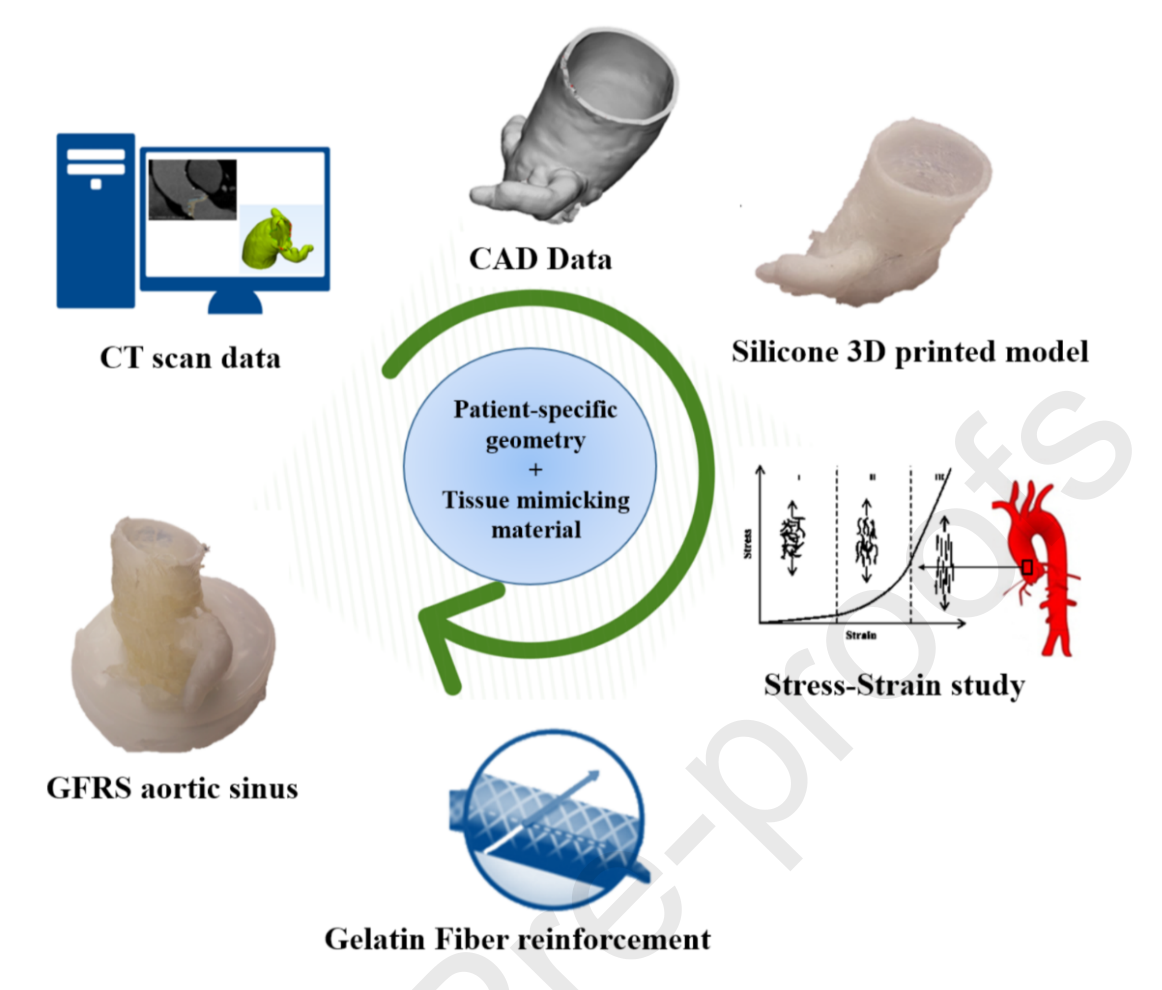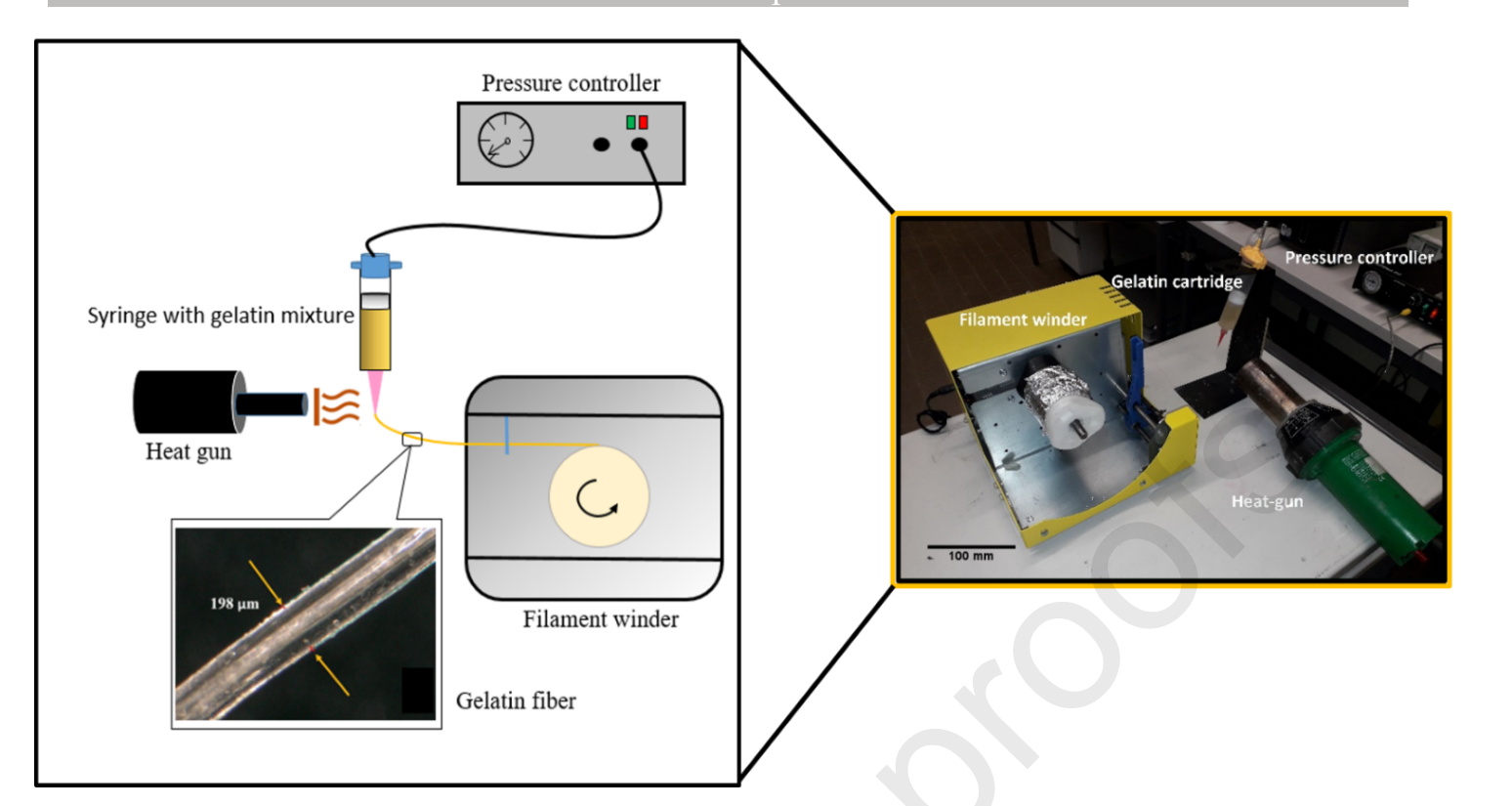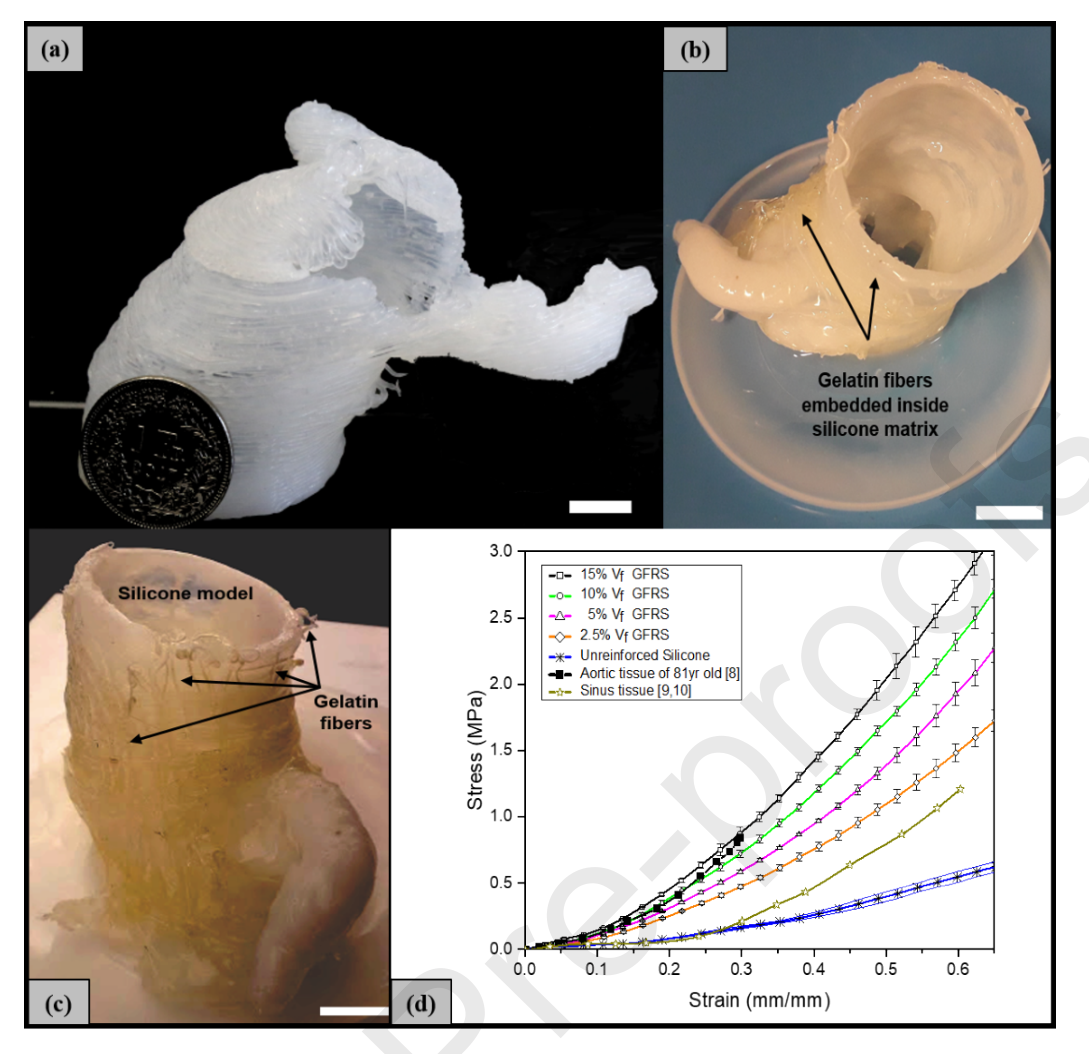Introduction: Additive manufacturing (AM) can be used to produce artificial aortic models for aortic valve replacement (TAVR)
Operation
of
training
or research. Through additive manufacturing, models can be individually tailored to the patient’s aortic anatomy. So far, existing models have mostly been made using a single rubber-like material. This material cannot replicate the mechanical properties of native aortic tissue, especially the stress-strain response in regions of high strain (>0.1).Surgical training using a model that does not truly reflect aortic properties
surgical
There are certain problems for doctors.
In May 2022, researchers at the Department of Materials Science and Engineering at KTH Royal Institute of Technology and the Laboratory for Composite Materials and Adaptive Structures at the Department of Mechanical and Process Engineering at ETH Zurich developed a
3D printingAortic model with realistic mechanical properties
, materials include gelatin fibers and silica gel. The model promises to be a realistic mimic of the aorta that simulates TAVR surgery. Their research has been published in Materials Letters.

researchers used
medicine
Imaging analyzes computed tomography data to identify patient-specific aortic sinus and surrounding
Blood vessel
anatomy. The designed novel silicone matrix composites, reinforced with gelatin fibers, were tested and compared with the stress-strain response of aortic tissue.The results show that such a model
It not only reflects the patient’s real arterial structure, but also has the characteristics of aortic tissue, which is very helpful for the development of next-generation medical models.

△ Schematic diagram of the research process
The research process can be briefly summarized as the extraction of patient-specific geometry from computed tomography data for the fabrication of aortic models. Silicone replicas were made using DIW. Subsequently, gelatin fibers were produced and wrapped on a silicone model to mimic the typical stress-strain behavior of native aortic tissue.

△ A laboratory setup developed for gelatin fiber production, including a filament winder, a barrel containing gelatin solution, a heat gun, and a pressure controller.

△(a) 3D printingSilicone aorta model (b)
post-processing
Post-GFRS aorta model (c) Printed silicone model reinforced with gelatin fibers (d) Tensile test results of the material and other reported values for high strain areas (Vf = volume fraction of fibers)
Summarize
Researchers
A mechanically representative silicone composite was successfully fabricated using unidirectional gelatin fiber-reinforced silicone composites.3D printingAortic model
. Gelatin fibers were deposited in the printed silicone model with different volume fractions, which could reflect the real stress-strain situation in the aortic tissue. This will make the model an effective surgical training tool for TAVR, as the mechanical situation of the different structures in the aorta is more realistic.
For more content, please download the original text to view:
https://doi.org/10.1016/j.matlet.2022.132396
(responsible editor: admin)


0 Comments for “Direct-to-ink 3D printing: manufacturing aortic models with realistic mechanical properties”